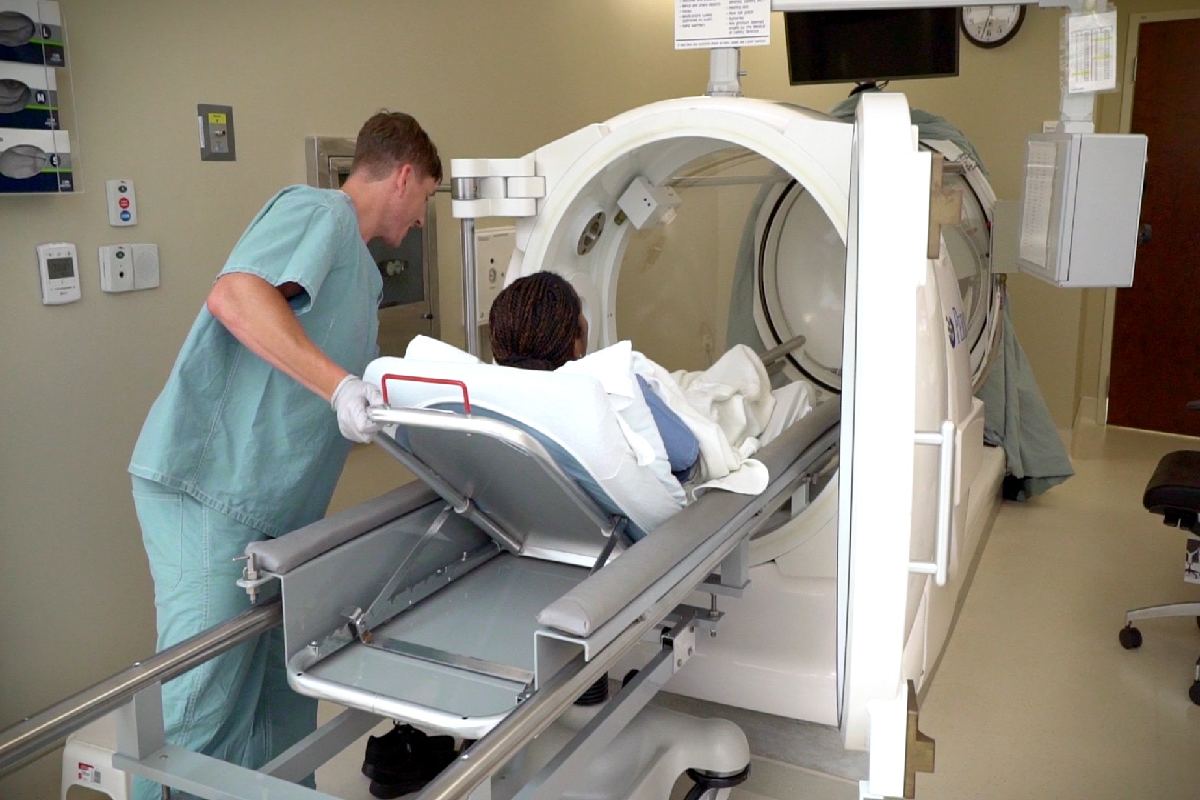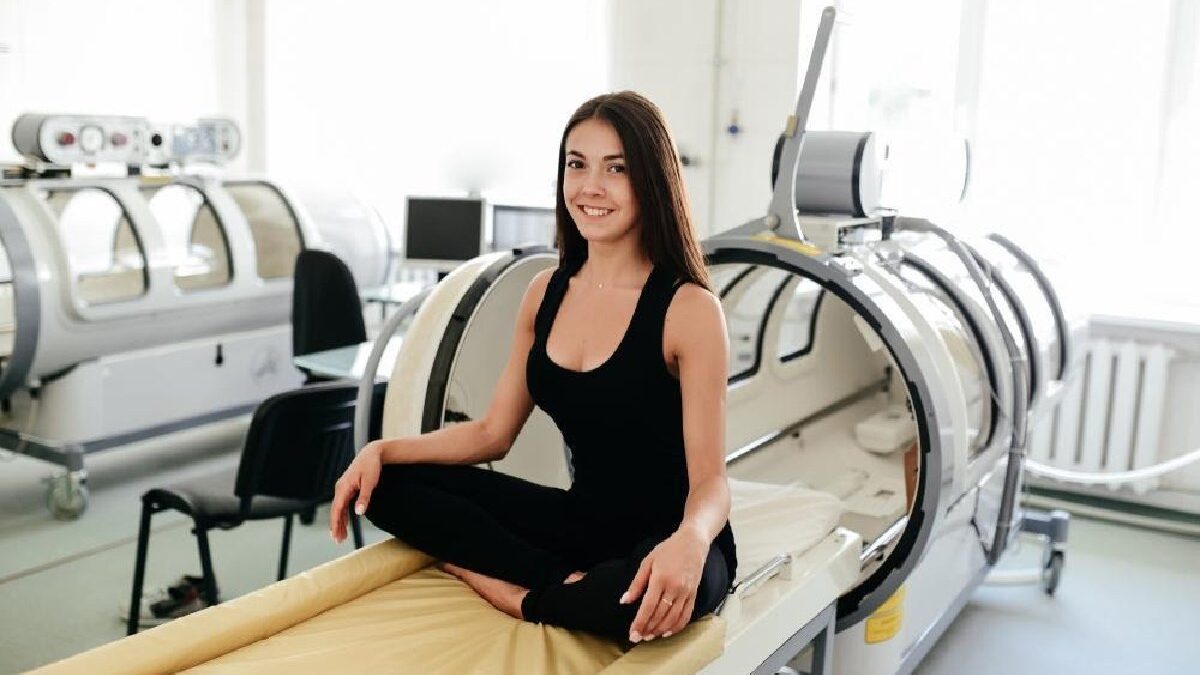The question “What does oxygen therapy treatment do?” needs a two-part answer. The first part addresses the process of hyperbaric oxygen treatment, and the second part explains what the treatment is used for. In the U.S. Hyperbaric oxygen treatment (HBOT) was first used during the early in the 20th century as an experimental treatment for the flu. Today it is approved to treat dozens of conditions.
Table of Contents
What Is Hyperbaric Oxygen Treatment?
Oxygen treatment is a painless, drug-free, non-invasive, relaxing treatment that requires the patient to sit or lay comfortably in a hyperbaric chamber filled with pure high-pressure oxygen. The air pressure inside the chamber increases higher than normal air pressure. This pressurized infusion of 100% oxygen allows the patient’s lungs to collect around 200% more than they would under normal circumstances.
Saturating the tissues and blood cells with these high levels of oxygen is the basis of HBOT no matter what the treatment is being used for.

What Happens During Treatment?
HBOT treatments are painless. As the pressure rises inside the chamber patients may feel a fullness in their ears similar to the feeling of being in a plane during takeoff. The pressure releases easily and does not last through the entire treatment.
Patients can read, listen to music, watch television, or relax and take a nap while they are inside the treatment chamber. All they have to do is lay back and breathe. The length and frequency of sessions vary according to what the patient is being treated for and whether the condition is mild or chronic.
The number of sessions needed for treatment also varies. Before beginning an HBOT protocol, your specialist will discuss a personalized treatment plan.
What Do the Chambers Look Like?
Both monoplace chambers and multiplace chambers are used for treatment.
A monoplace chamber is a tube-like compartment built for only one person at a time. The chamber is enclosed with clear acrylic to provide maximum visibility and comfort. Consider HBOT facilities such as Aalto Hyperbaric that work to utilize FDA-approved 100% oxygen monoplace chambers.
Multiplace chambers are rooms where two or more people can receive treatment at the same time. Pure oxygen is administered through masks or hoods.
How Does Hyperbaric Oxygen Treatment Work?
HBOT’s high level of oxygen improves the condition of hypoxic tissues — tissues that are not receiving adequate amounts of oxygen. Alternating periods of hypoxia and hyperoxia (super oxygenation) promote the growth of healthy new blood vessels in the hypoxic tissues. This process, known as neovascularization, is essential for healing certain kinds of wounds and diseases.
HBOT can treat a variety of skin, neurological, and internal issues as well as injuries and disabilities. Some of the conditions treated include:
- Crush injuries
- Reducing fatigue
- Improve brain function
- Stimulate the healing process after surgeries
- Bone infections (osteomyelitis)
- Flesh-eating diseases
- Gas gangrene
- Cyanide and carbon monoxide poisoning
- Diabetic wounds
- Ease arthritis pain
- Improve skin elasticity
- Decrease inflammatory responses
- Boost the immune system
There are also many “off-label” conditions that respond to HBOT treatment. Oxygen treatments benefit the body as they improve the immune system and stimulate the natural healing process. Both of these actions are needed to prevent or fight disease and heal injuries.
Who Can Benefit From Hyperbaric Oxygen Treatment?
The benefits of HBOT are almost limitless. Every person can benefit from improved circulation and a decrease in tissue inflammation. Older people experiencing heart issues, circulation problems, diabetes, or bone loss can benefit greatly from hyperbaric treatments. Proactive seniors can make HBOT part of their overall wellness care to maintain health and reduce the aches and pains associated with aging.

